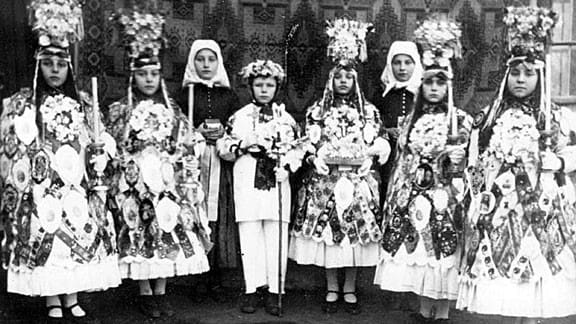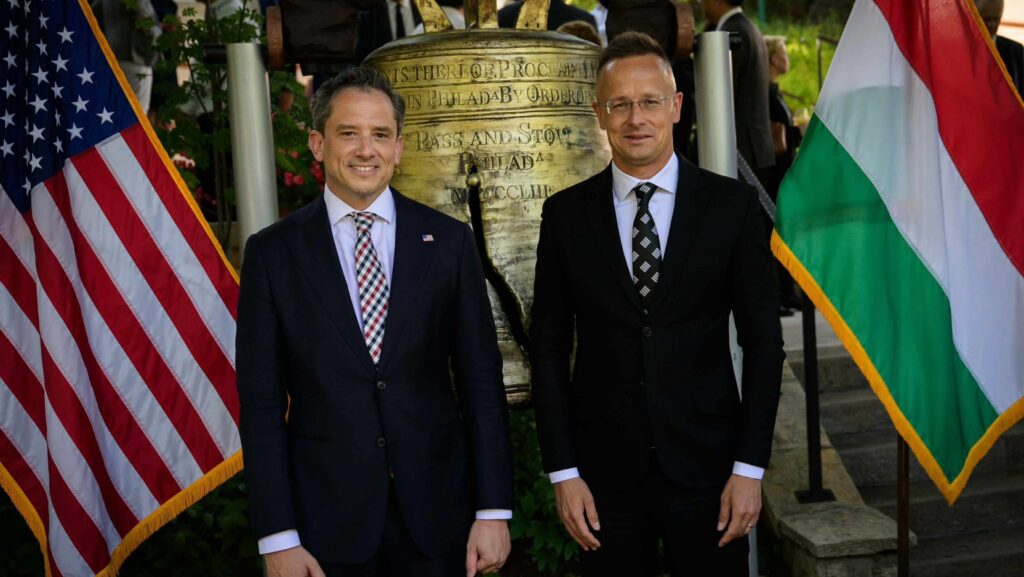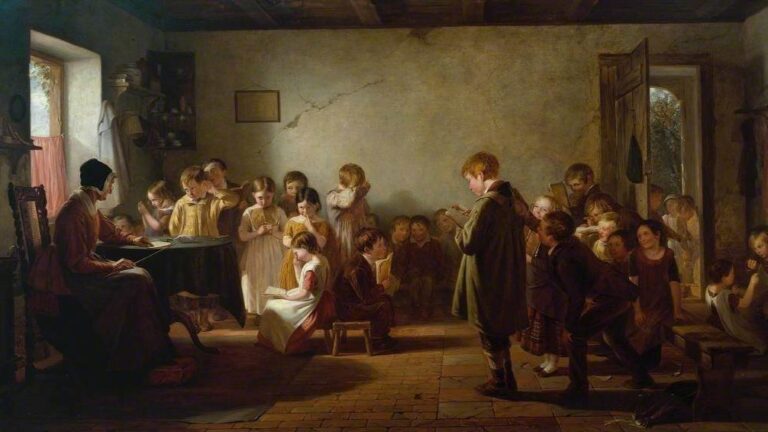In Hungary, Christmas celebrations vary from region to region, determined by the traditions of the nationalities and ethnic groups that inhabit them. One such distinct ethnic group are the Swabians.
The Hungarian Swabians, or Danube Swabians, have long-standing historical ties to the Pilis area and some other regions of Hungary. The term ‘Swabian’ refers to the German-speaking population that settled in various parts of Central and Eastern Europe during the Habsburg monarchy’s expansion. The Hungarian Swabians trace their roots back to the 18th century when Maria Theresa, the Empress of the Habsburg Empire, invited German settlers to cultivate and develop the sparsely populated areas of Hungary following the devastation of the Ottoman times.
In the case of the Pilis area, which is situated in the vicinity of Budapest, the presence of Hungarian Swabians has left an indelible mark on the region’s cultural and historical landscape. These settlers played a crucial role in agricultural development, introducing new farming techniques and contributing to the economic prosperity of the region. The Pilis area, known for its picturesque landscapes and proximity to the capital, became a significant hub for Swabian communities.
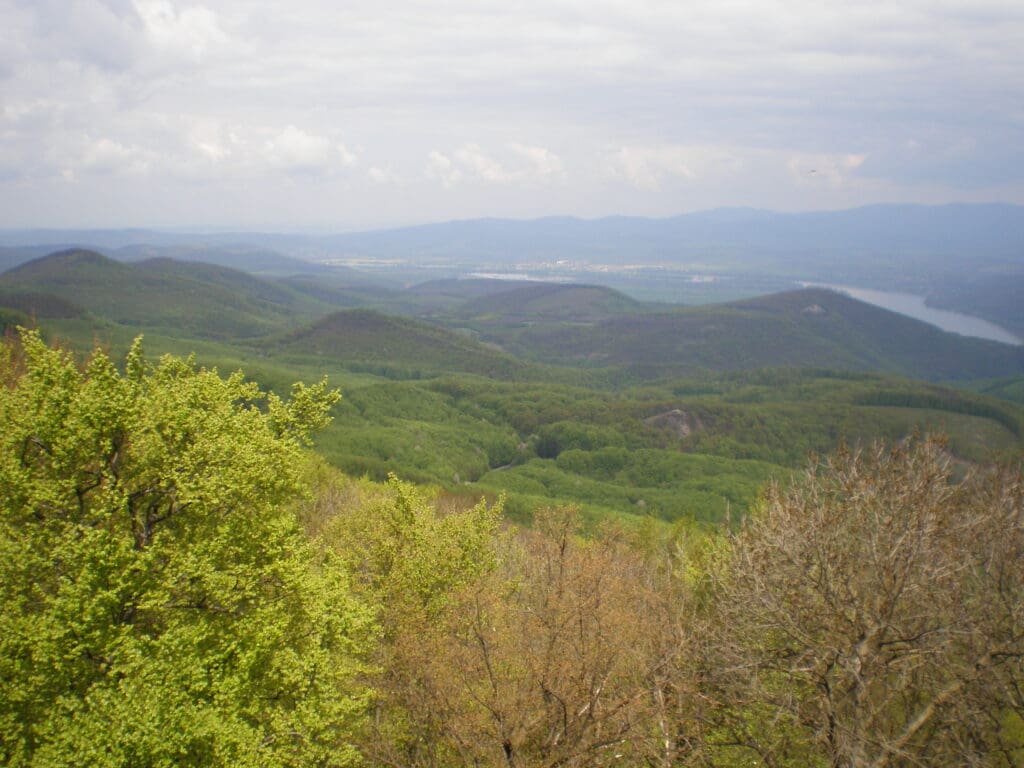
The Traditions of Pilisvörösvár, the Largest Settlement of the Region
German settlers introduced the tradition of erecting Christmas trees and adorning them with gifts for children upon their arrival in Hungary. On Christmas Eve, every housewife would drape a large white tablecloth on the table. All chores, including tending to the animals and cutting wood, were completed during the day since no work was permitted on the 25th. As evening fell, a celebratory group would move from house to house, presenting a rehearsed Nativity play in song and speech. The midnight Mass also featured the performance of a Nativity play.
The Nativity play was enacted by a group of three to five girls, accompanied by a guide carrying flowers and a bell. The role of Saint Joseph required a girl with a low voice, while Mary’s voice needed to be particularly pure and resonant. The other girls portrayed angels, singing various Christmas carols. Mary wore a crown made of golden paper, which shimmered splendidly in the candlelight. They knocked on doors and inquired, ‘Can the Little Jesus come in?’ ‘Yes,’ came the reply. Mary, Joseph, and the angels entered the room, placing the cradle with the infant Jesus on the table, and commenced singing. The Christmas tree, already prepared in the kitchen, was placed on the table upon entry. The mother or older siblings adorned the Christmas tree in the afternoon with candies, gilded walnuts, apples, grapes, and stars made of straw.
Képek a múltból
1991, 1992 A Pilisvörösvári Hagyományőrző Egyesület archívumából: Karácsonyi imádságok (1991), Betlehemezés (1991), Betlehemezés (1992).
After the Nativity play, the children were presented with gifts, and sparklers were lit. Finally, the Nativity performers bid farewell. Before leaving the house, they gave a birch stick (virgács in Hungarian, with a similar role to coal in Western culture) to the mother and father. This was considered appropriate for wild and misbehaving children. Afterwards, they wished a joyful and blessed Christmas and proceeded to the next house.
Following this, the housewife took a coal shovel, placed a little coal and spruce branch on it, sprinkled it with holy water, and carried it to every room in the house, even to the stable and courtyard. In the name of the Holy Trinity, everything was ‘fumigated’.
The time for the midnight Mass approached. However, on this evening, the housewife would linger a bit longer in her chair than usual. This was an old tradition in Vörösvár. It was believed that if the housewife remained seated on Christmas Eve for a longer period, hens hatched at the end of January or, at the latest, early February, would calmly sit on as many as 18 to 20 eggs.
One had to set out early at night if one wanted to find a seat in the church. On both sides of the altar stood a large Christmas tree, and on one of the side altars, a marvellous nativity scene with the Holy Family shone. When the priest and the altar boys entered, the organ resounded. People were fully present in spirit, celebrating the birth of the Lord. The midnight Mass always concluded with the beautiful carol Stille Nacht, heilige Nacht (Silent Night, Holy Night).
On both days of Christmas, people attended church in the morning and visited relatives in the afternoon. The true Christmas atmosphere included the soft, quiet night. Drifting snowflakes, shining stars, and moonlight always delighted the rural people. A Christmas weather prediction goes as follows: ‘A green Christmas, a white Easter.’ Or alternatively: ‘Clover at Christmas, snowflakes at Easter.’
Traditions In Pilisszentiván
24 December, the day of the birth of Jesus, has always been a grand celebration in Szentiván, particularly memorable for the children. In the past, they did not receive lavish gifts due to their parents’ financial constraints, as Swabians used to be miners in the area. Instead, their packages contained rag dolls, sugar, walnuts, and apples. Nevertheless, what made the celebration truly memorable was the krisztkindl, or ‘Christkindlspiel’ in German (Nativity play). On Christmas Eve, several small groups traversed the village, with each group featuring children playing the roles of Mary, Joseph, Gabriel, and two angels. Mary wore a crown and held a small manger with the infant Jesus, while Gabriel carried a stick, all of them adorned in white. They visited houses with young children, where parents handed them the pre-decorated Christmas tree and gifts before entering the home. Their arrival was announced by a small bell at the door. After entering, Mary placed the manger on the hosts’ table, and then they sang a hymn.
The children had to say a prayer before receiving their gifts, and this was also the moment when the Christmas tree found its place. Initially, the tree was adorned with silver or gilded walnuts and apples, later with packaged sugar cubes, and eventually with Christmas ornaments. The hosts expressed their gratitude with a small sum of money for the children’s performance. On Christmas Eve, the family dined on wine soup and freshly baked braided bread from the baker. No meat was consumed on this day. In the evening, children could stay up late playing, while men played cards and enjoyed wine. At midnight, usually except for the head of the household, the entire family attended the midnight mass. After the mass, they often consumed sauerkraut and smoked sausage.
Christmas Celebration in Solymár, the Largest Hungarian Swabian Settlement
On Christmas afternoon at two o’clock, a group of girls dressed as the Virgin Mary, Saint Joseph, and angels set out with a boy, symbolizing the Holy Family. They carried a small crib with a little doll representing the baby Jesus. They visited every house with young children, re-enacting the birth of Jesus and singing Christmas carols. Parents awaited them in front of their homes, informing them on their children’s behaviour, kindness, and mischievousness. The angels, with paternal assistance, carried the Christmas tree and presented gifts to the children, but not before questioning them: ‘Can you pray? Can you recite a beautiful poem?’ The children’s responses were heard, and if they had misbehaved, a small birch stick was left at the house as a warning. After bidding farewell, they moved on. Other parents observed from their windows, waiting for the children to approach so they could also invite them in.
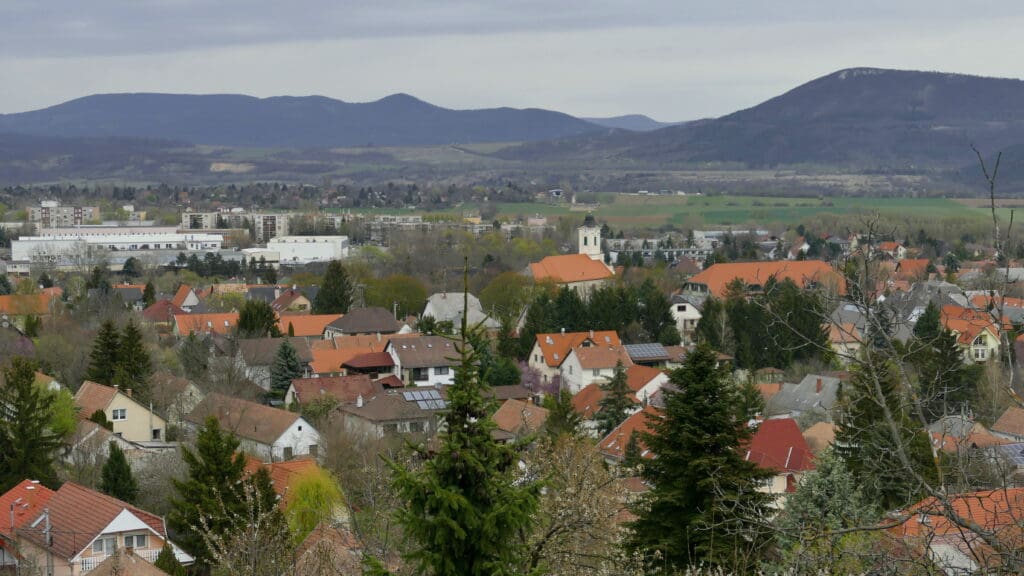
Solymár seen from Panoráma Street. PHOTO: Csaba Jászai/MTVA/MTI
Differing Traditions, Same Culture
While the way the holidays are celebrated are rather similar among those of Swabian origin, it is evident that even in the same area, traditions may differ somewhat. These unique traits continue to be integral parts of the cultural identity of those living in the Pilis area. A Nativity Play is usually still presented every year in the school in Pilisszentiván, for example, with every role played by a student. Families attend these plays in large numbers to see their children bring joy to the whole village.
While the traditions have evolve and changed over the years, they have been largely preserved, and the spirit of the German Hungarian settlers is still alive, allowing the locals to honour their ancestral heritage at this time of year.

